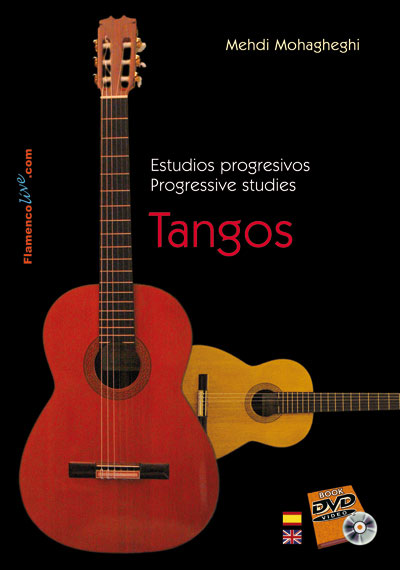Flamenco Guitar. mod.160
Description
The guitar is a musical instrument with ancient roots that is used in a wide variety of musical styles. It typically has six strings, but four, seven, eight, ten, and twelve string guitars also exist.
The modern guitar is descended from the Roman cithara brought by the Romans to Hispania around 40 AD, and further adapted and developed with the arrival of the four-string oud, brought by the Moors after their invasion of the Iberian peninsula during the 8th century AD.[3] Elsewhere in Europe, the indigenous six-string Scandinavian lut (lute), had gained in popularity in areas of Viking incursions across the continent. Often depicted in carvings c.800 AD, the Norse hero Gunther (also known as Gunnar), played a lute with his toes as he lay dying in a snake-pit, in the legend of Siegfried.[4] By 1200 AD, the four string "guitar" had evolved into two types: the guitarra morisca (Moorish guitar) which had a rounded back, wide fingerboard and several soundholes, and the guitarra latina (Latin guitar) which resembled the modern guitar with one soundhole and a narrower neck.
During the Middle Ages, guitars with three, four, and five strings existed. The Guitarra Latina had curved sides and is thought to have come to Spain from elsewhere in Europe. The Guitarra Morisca, brought to Spain by the Moors, had an oval soundbox and many sound holes on its soundboard. By the fifteenth century, four double-string guitars, similar to lutes, became popular, and by the sixteenth century, a fifth double-string had been added.
It is very pleasant to know that this guitar artisan will not manufacture two identical instruments, each will be different. All guitars are hand made.
Characteristics :
Fretboard : 650mm
Neck : cedar abd ebony
Neck width on the nut : 51.5mm
Neck width on the fret 12: 61.5mm
Neck: ebony
Back: pine
Body: massive cypress
Special inner building
Body's width on the fret 12: 95mm
Body side (ribs): Palosanto and white and black
Bridge: Palosanto
Headstock: golden and black
High quality case included to protect your guitar.
The traditional flamenco guitar is made of Spanish cypress and spruce, and is lighter in weight and a bit smaller than a classical guitar, to give the sound a "brighter" and percussive quality. Volume has traditionally been very important in flamenco construction, as a guitarist needed to be heard over the sound of the dancers' nailed shoes.
Musical characteristics and techniques:
The flamenco guitar, in contrast to the classical, is also equipped with a tap plate, called a golpeador. This is often made of transparent plastic, similar to a pick guard, and protects the body of the guitar from the rhythmic finger taps, called golpes. Originally, flamenco guitars were made with sooden tuning pegs similar to a violin. Some guitarists still prefer these pegs to the classical style tuning gears. It is widely accepted that more weight in the headstock can improve sustain, unsurprisingly, less weigth can result in quicker attack; a desurable quality in a flamenco guitar. This could explain why many flamenco players still cling to th e traditional pegs. The action or the height of the strings above the fingerboard is generally lower (<3mm at the 12th fret) than that of a classical guitar. This aids faster playing, especially during fast picado passages, but can lead t some fret buzz-aslo a frequent feature of the traditional "flamenco" sound.In short, flamenco guitars are better suited for flamenco music than classical guitars.
Strictly, flamenco guitar is an accompaniment to singing and dancing in the tradional flamenco forms.
Flamenco is played somewhat differently from the classical guitar, utilizing different strumming patterns and techniques. Flamenco is commonly played using cejilla (capo) which somewhat causes the guitar to sound more brilliant and percussive. However, the main purpose in using a cejilla is to change the key of t he guitar in order to suit the singer's vocal range.
In addition to the techniques common to classical guitar, flamenco guitar technique is uniquely characterised by the following:
Golpe: percussive finger tapping on the soundboard at the area above or below the strings. This requires a golpeador (tap-plate) in order to protect the surface of the guitar.
Picado: single-line scale passages performed apoyando but with more attack and articluation.
Rasgueado: strumming done with outward flicks of the right hand fingers, done in a huge variety of ways. A nice rythmic roll is obtained, supposedly reminicent of the bailaor's (flamenco dancer) feer and the roll of castanets.
Alzapua: a thumb techniqu which has roots in oud plectrum technique. The right hand thumb is used for both single-line notes and strummed across a number of strings. Both are combined in quick succession to give it a unique sound.
Tremolo: done somewhat differently from the conventional classical guitar tremolo, it is very commonly played with the right hand pattern p-i-a-m-i.
Following the musical rythmes we can classify the flamenco styles:
2/4. the " danzón ", the rumba, the tanguillo and the " zapateado ".
3/4 : Alboreá, Alegrías, Barberas, Cantiñas, Caña, Caracoles, Fandangos, Verdiales, Mirabrá, Caracoles, Romeras, Rondeñas, Sevillanas, Soleá and Soleá por bulerías.
4/4: Colombianas, Farruca, Garrotín, Mariana, Danza, Tangos, Taranto, Tientos and Zambra.
6/8 and 3/4: Bulerías, Guajiras, Zapateado catalan.
Free styles (ad libitum): Cartageneras, Fandangos naturels, Granaínas, Demi Granaínas, Malagueñas, Milongas, Mineras, Tarantas.
Songs without guitar accompaniment: Carceleras, Debla, Martinete, Pregón, Saeta, Toná, Trilla.
Some advice :
The neck is very delicate and the wood is very sensitive. You have to be quite careful with this point.
Please keep your instrument in a dry place, with a temperature and humidity not too high and not too low.
After using your guitar keep it in its case and if you are travelling or if you are not gonan use your guitar during a long time a good advice is to slacken the strings.
Use a sweet and dry rag to clean your instrument and be careflu with your short's buttons when you are playing because they can scratch the guitar.
If you follow theses pieces of advice and if you treat your guitar respectfully, your instrument will go with you during all life.
Item's details
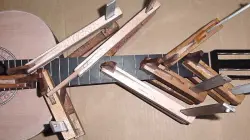
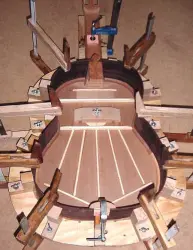
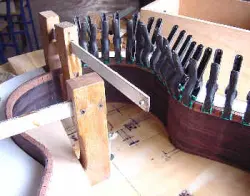
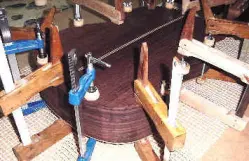
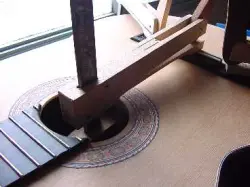
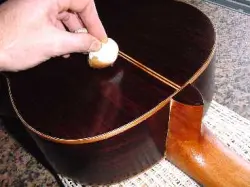








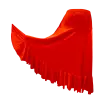































 Wholesalers/Stockists
Wholesalers/Stockists Contact
Contact







